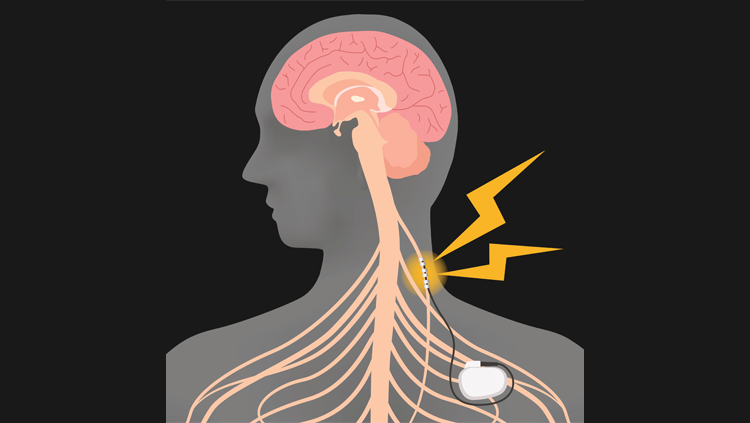The Promise and Perils of Brain Training
- Published18 Mar 2019
- Reviewed18 Mar 2019
- Author Jennifer Michalowski
- Source BrainFacts/SfN

Television and radio ads for the brain-training program Lumosity once touted some impressive benefits: users could boost performance at work and school, stave off cognitive decline as they aged, and even improve cognitive function after a brain injury or stroke. That all changed in 2016 when the U.S. Federal Trade Commission fined the company $2 million for deceptive advertising.
Lumosity is just one of many commercial brain-training programs promising to boost users’ cognitive skills. Many of these programs are based on easy-to-use computer games, which are accessible and may even be fun — but there’s little evidence that they work. While users get better at the games through practice, many cognitive scientists say it’s unlikely to improve their performance in work or school.
In 2014, more than 70 scientists signed a consensus statement objecting to marketers’ claims that brain-training games reduce or reverse cognitive decline, arguing that, so far, there was no compelling scientific evidence for such benefits.
On the other hand, according to a recent report from the National Academies of Sciences, Engineering, and Medicine some types of cognitive training might slow cognitive decline and delay the onset of dementia, calling the available scientific evidence inconclusive but encouraging. So is cognitive training worth doing? And if it is, are some kinds better than others?
The largest study to date on cognitive training involved nearly 3,000 participants aged 65 or older and followed them for a decade. Funded by the U.S. National Institutes of Health and known as the Advanced Cognitive Training for Independent and Vital Elderly (ACTIVE), participants completed ten-hour training programs aimed at improving either memory, reasoning, or their ability to quickly process visual information, or were assigned to a control group that completed no training.
ACTIVE participants assigned to training also learned strategies to help them succeed at the training tasks. For example, they practiced organizing information and used visualization and association techniques to remember lists of words. What’s more, they were encouraged to think about how they might use those strategies in everyday situations like remembering a grocery list. Doing so took real dedication.
“You have to practice these strategies and get them to the point where they’re so familiar that you can just use them almost automatically,” says George Rebok, a professor at the Johns Hopkins Bloomberg School of Public Health and one of the leaders of the ACTIVE study. “Learning these strategies does impose some cognitive burden, and it’s easy to give up. It’s important that people stick with it.”
Participants got better at tasks related to the specific training they received. Those who completed the memory training program, for example, got better at remembering lists of words, but were no better at searching for objects within a visual scene than they were before. Encouragingly, some benefits lasted long after the initial training period: Ten years later, people who received cognitive training continued to perform better at relevant cognitive tasks compared to people in the control group.
What’s more, the trained participants also reported less difficulty with daily activities, like managing money and preparing meals. Now, more than 20 years after the start of the trial, Rebok and his colleagues are analyzing driving records, insurance claims, and other data to measure the training’s long-term, real-life impacts.
Why might the training have worked? Explicitly encouraging participants to connect the cognitive strategies they learned to their daily lives may have been important, Rebok says. “We’re not just giving people tools, but also emphasizing how you can use those tools and under what circumstances you can apply them,” he says. The social element of the group training might also have contributed to its success, he adds.
There’s still a lot to learn about what kinds of cognitive training are most effective and what we can expect them to achieve. “The science isn’t there yet. And it’s not likely to be a one-size-fits-all approach,” says cognitive neuroscientist Kara Blacker.
In a 2017 study involving adults in their twenties, Blacker and colleagues at Johns Hopkins University tested two different training regimens designed to improve working memory. We call on working memory constantly to hold information like phone numbers or driving directions in mind, so improving it through targeted training is likely to have real-world impacts, Blacker says.
While both types of training improved participants’ performance on a new but related memory task, those who trained with an exercise known as “dual n-back” improved significantly more. Dual n-back tasks require trainees to hold two different kinds of information in mind — in this case, a series of spoken letters paired with squares flashing at different locations on a grid. When a new set of cues is presented, participants are asked to remember if the same letter or location was presented n number of pairs ago. The test gets harder as n increases and participants must recall further and further back. The researchers say the demands of continually updating information in the brain — an element missing from the alternative memory training task — may be critical for improving working memory.
The dual n-back trainees also showed changes in brain activity during a working memory task. Between pre- and post-training, alpha waves in the frontal regions of their brains got stronger, and previous studies link these brain waves to the ability to control information held in our working memory. Other researchers have also observed changes in activity and size of certain brain areas following cognitive training, and researchers are just beginning to explore how training elicits these effects and what they mean. “But this tells us that something was changing on a neural level, which is really exciting and suggests there is something unique about the dual n-back training,” Blacker says. Better characterizing how cognitive training alters brain activity could help researchers refine training approaches to make them more effective.
Ultimately, cognitive training is probably best thought of as a complement to other aspects of a healthy lifestyle, Rebok says. “You have to view cognitive training within a broader context of good lifestyle habits, like good nutrition, exercise, stress reduction, and good sleep hygiene.” And while targeted training may be beneficial, activities such as social interactions or learning a new language might be just as important for brain health. “You don’t want to do cognitive training to the exclusion of other activities that might be cognitively stimulating, like socializing with friends or reading a book,” Rebok says.
CONTENT PROVIDED BY
BrainFacts/SfN
References
Ball, K., Berch, D. B., Helmers, K. F., Jobe, J. B., Leveck, M. D., Marsiske, M., … Willis, S. L. (2002). Effects of cognitive training interventions with older adults: A randomized controlled trial. Journal of the American Medical Association, 288(18), 2271–2281. doi:10.1001/jama.288.18.2271
Blacker, K. J., Negoita, S., Ewen, J. B., & Courtney, S. M. (2017). N-back versus Complex Span Working Memory Training. - PubMed - NCBI. Journal of Cognitive Enhancement, 1(4), 434–454. doi:10.1007/s41465-017-0044-1
Committee on Preventing Dementia and Cognitive Impairment, Board on Health Sciences Policy, Health and Medicine Division, & National Academies of Sciences, Engineering, and Medicine. (2017). Preventing Cognitive Decline and Dementia: A Way Forward. (A. I. Leshner, S. Landis, C. Stroud, & A. Downey, Eds.). Washington, D.C.: National Academies Press. doi:10.17226/24782
Engvig, A., Fjell, A. M., Westlye, L. T., Moberget, T., Sundseth, Ø., Larsen, V. A., & Walhovd, K. B. (2010). Effects of memory training on cortical thickness in the elderly. NeuroImage, 52(4), 1667–1676. doi:10.1016/j.neuroimage.2010.05.041
Max Planck Institute for Human Development and Stanford Center on Longevity. (n.d.). A Consensus on the Brain Training Industry from the Scientific Community. Retrieved from http://longevity.stanford.edu/a-consensus-on-the-brain-training-industry-from-the-scientific-community-2/
Rebok, G. W., Ball, K., Guey, L. T., Jones, R. N., Kim, H.-Y., King, J. W., … Willis, S. L. (2014). Ten-Year Effects of the ACTIVE Cognitive Training Trial on Cognition and Everyday Functioning in Older Adults. Journal of the American Geriatrics Society, 62(1), 16–24. doi:10.1111/jgs.12607
Ross, L. A., Webb, C. E., Dennis, N. A., Whitaker, C., Hicks, J. M., Visscher, K. M., … Samimy, S. (2018). The Effects of Useful Field of View Training on Brain Activity and Connectivity. The Journals of Gerontology: Series B. doi:10.1093/geronb/gby041
Simons, D. J., Boot, W. R., Charness, N., Gathercole, S. E., Chabris, C. F., Hambrick, D. Z., & Stine-Morrow, E. A. L. (2016). Do “Brain-Training” Programs Work? Psychological Science in the Public Interest, 17(3), 103–186. doi:10.1177/1529100616661983
Wu, R., Rebok, G. W., & Lin, F. V. (2016). A Novel Theoretical Life Course Framework for Triggering Cognitive Development across the Lifespan. Human Development, 59(6), 342–365. doi:10.1159/000458720





.jpg)












